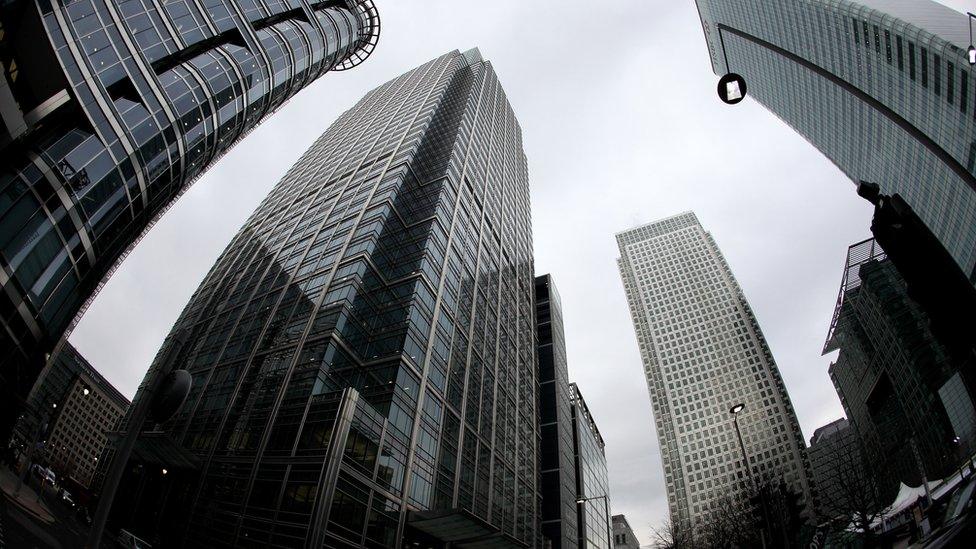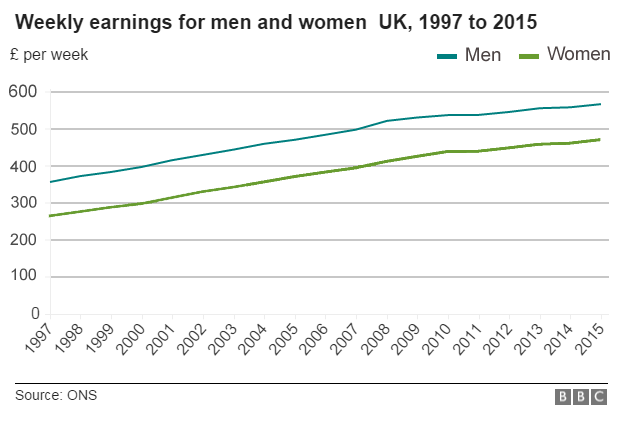Firms forced to reveal gender pay gap
- Published

The new rules will apply to companies that employ more than 250 workers
Companies that fail to address pay differences between male and female employees will be highlighted in new league tables under plans announced on Friday.
Those with more than 250 employees will be forced to reveal their pay gap.
The regulations will affect about 8,000 employers across the UK.
They will need to start calculating the pay gap from April 2017 - 12 months ahead of the first tables being published.
Latest figures suggest that women in the UK still earn on average 20% less than men.
Under the plans announced by Women and Equalities Minister Nicky Morgan, private companies and voluntary organisations will be required to reveal the number of men and women in each pay range to show where pay gaps are at their widest.
The Victoria Derbyshire programme explains the UK's gender pay gap
Employers must also publish their gender pay gap on their websites. They will have to report every year and senior executives will be expected to sign off the figures personally.
Ms Morgan said that women and men must be recognised equally and fairly in every workplace so there was "nowhere for gender inequality to hide".
No 'name and shame'
"I'm calling on women across Britain to use their position as employees and consumers to demand more from businesses, ensuring their talents are given the recognition and reward they deserve," she said.
Carolyn Fairbairn, CBI director-general, said that league tables should not be used to "name and shame" firms, because data could only give a partial picture - factors such as the mix of part-time and full-time workers, as well as sectoral differences, needed to be taken into account.
"Where reporting can be useful is as a prompt for companies to ask the right questions about how they can eradicate the gender pay gap," she said.
"The government should consult closely with business to ensure that this new legislation helps close the gender pay gap, rather than ending up as a box-ticking exercise."



However, Chartered Management Institute chief executive Ann Francke argued: "Publishing league tables will drive diversity, bringing benefits not just to women but to business. Closing the pay gap will open the talent pipeline, increase management quality and boost productivity."
And the TUC said the plans did not go far enough.
"We're disappointed that firms won't have to publish their gender pay gap figures until 2018," said Frances O'Grady, the TUC's general secretary.
"It is a real shame that bosses won't be made to explain why pay gaps exist in their workplaces and what action they will take to narrow them."

That sentiment was echoed by Kate Green, the shadow minister for women and equality.
"At this rate, it will be another 47 years until the gap is closed, so we haven't a moment to lose," she said.
Last summer, Prime Minister David Cameron pledged to end the gender pay gap within a generation.
The Office for National Statistics (ONS) said in November that the gap between men and women's pay for full-time workers was 9.4% in April 2015, compared with 9.6% in 2014.
The government hopes to tackle the root causes by encouraging more girls to study maths and science over the next five years.
Regina Moran, the chief executive of Fujitsu UK and Ireland, said many businesses had a cultural problem: "It's important that companies eliminate any biased pay structures within the organisation. But differences in pay are often part of a wider context, as businesses fail to create environments that support women in the long term.
"Firms must also be aware of and eliminate any subliminal bias in hiring, promotions and pay rises."
- Published18 November 2015

- Published25 October 2015
